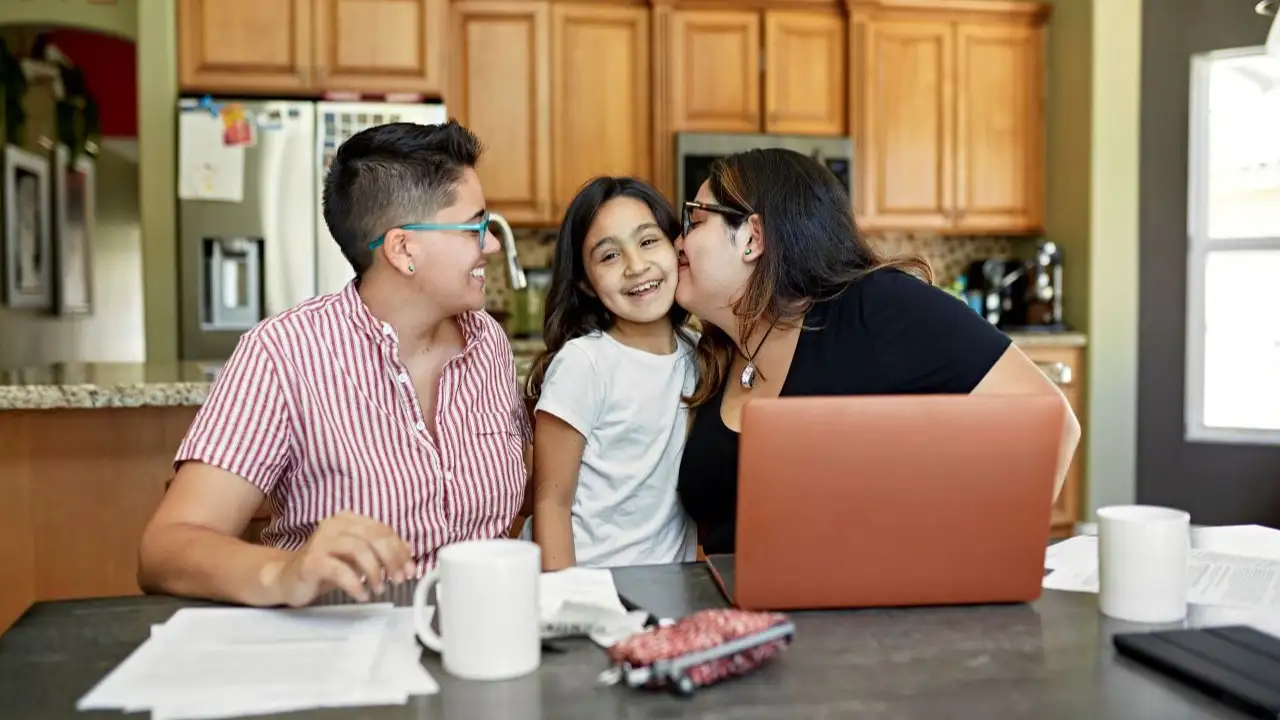
Money Tips & Education
Zero-based budgeting
Feb 22, 2024
Written by
Reviewed by
Key takeaways:
Zero-based budgeting gives every dollar of income a job.
The goal is to be intentional with your money, no matter how you choose to use it.
A zero-based budget could help you direct more dollars to debt repayment before you spend them on things that are less important to you.
Leveling up your money management is a great thing, especially if you've got goals.
Zero-based budgeting could help you optimize your finances (that’s a fancy way of saying that it makes you the boss of your bucks). You get to decide which expenses serve you—and put all of your money toward those things. You’re not just watching the game. You’re making strategic plays with the goal of winning.
Let’s dive into how it works.
What is zero-based budgeting?
Zero-based budgeting is a system that applies your income to one of three categories: expenses, savings, or debt repayment. The goal of a zero-based budget (sometimes called a “zero-base budget”) is to have nothing left over at the end of the month.
Pro tip: If you need to know what you're spending each month, consider using a free budgeting app to keep track. You can sync the app to your bank account to easily record where your money goes.
A zero-based budget can help you be more intentional with your money. Since you have to give every dollar a job, you’ll know where all of your money goes.
Traditional ways of budgeting usually don’t require you to account for every dollar. The flexibility can be nice, but it’s easier to spend leftover income instead of saving it or paying down debt. Zero-base budgeting avoids that, because after subtracting expenses, savings, and debt repayment from your income, you should be left with zero.
That's not the same thing as living paycheck-to-paycheck (as in, you only have enough money to cover expenses until you get paid again). Zero-based budgeting means planning out what to do with your paychecks, so that you meet all your needs and work toward your goals.
Benefits of zero-based budgeting
Following zero-based budgeting tips could help you take control of your money, because you have to find the best way to use your income. If there's only so much money coming in, you have to be deliberate about prioritizing expenses. Needs come first, then savings and debt repayment, then wants.
A zero-based budget can help you cut down on impulse purchases and unnecessary spending. You can take the money you would have spent and put it toward basic needs, allocate it to savings, or chip away at credit cards or other kinds of debt.
If you've struggled with understanding how to budget or sticking with a budget, a zero-base budget system could help you take charge of your finances. Zero-based budgeting might not work for everyone, but if you like to dig into the numbers and set rules for spending, it can be a good fit.
Step-by-step guide to zero-based budgeting
Making a zero-base budget is usually the most challenging when you're doing it for the first time. Once you get into the habit, it becomes easier.
Here's how the budgeting process works.
Add up your income. Zero-based budgeting starts with knowing how much money you’re working with. “Income” includes any money that comes in regularly. You might make money from a part-time or full-time job, side hustles, or gig work. Child support and alimony could also go here.
List your expenses. List everything you spend money on, including necessities like rent or mortgage payments, utilities, and groceries, as well as non-essentials like clothes or dinners out. You’ll rank your expenses, with needs at the top. You’re not just scrutinizing your expenses to make sure you can afford them. You’re also deciding whether each expense moves you closer to where you want to be.
Decide how much to apply to savings. The zero-based budget method includes room for saving, so think about your financial goals. If you want to build a $10,000 emergency fund, for example, figure out how much you could put toward that goal each month.
Calculate how much should go to paying down debt. Look at what you're already paying. Then ask yourself how much you need to pay to hit your goal. For example, say you want to pay off a credit card that has a $10,000 balance and a 17% APR over the next 12 months. You would need to budget about $912 per month to reach that goal. Whether that's realistic depends on how much money you've already allocated to expenses and savings in your budget.
Pro tip: A debt consolidation loan could be a good strategy to get rid of your debt, especially if you can get a lower interest rate.
Assign each dollar of income. Once you've identified your expenses, savings goals, and the debt repayment goals you'd like to challenge yourself to meet, the last step is allocation. Here, you take the income number you calculated in step one and decide where every dollar of it goes. This is usually the most time-consuming part of making a zero-based budget, because you go through each budget category in detail.
Tips for a successful zero-based budget
Making a zero-based budget is pretty straightforward, but often, the challenge is sticking to it. Here are a few tips for a successful budgeting journey.
Review your expenses before getting started. Switching to a zero-based budget will only take you so far if you don't know what you're spending money on. It's helpful to go over your spending for the previous three to six months. That can give you a good idea of how you spend, so you know which budget categories to include.
Account for irregular expenses. Some expenses might get paid periodically, rather than monthly. For example, you might pay car insurance premiums twice a year. The best way to account for those expenses is to include saving for them as a line item in your budget. That way, you’ll have the cash to cover them when they're due.
Get a month ahead. If you can, getting a month ahead on bills can give you some breathing room, in case your income drops or you run into a higher-than-expected expense. If you have money in savings, you could use that to pay bills ahead. If not, you might tweak your zero-base budget to apply extra money to bills and a little less to savings or wants.
Plan budget dates. Zero-based budgeting isn't “set it and forget it.” Review your budget at least monthly to make any adjustments to your spending plan if needed. You might schedule your budget dates around the times you get your paychecks to make dividing up your income easier.
Reward yourself. Last but not least, remember why you're budgeting in the first place, and reward yourself when you get a win. If you come in under-budget, for instance, you could give yourself a small treat with some of the leftover cash, and put the rest toward the goals that can lead you to financial freedom. That can help you stay motivated to stick with your zero-based budget plan.
Author Information
Written by
Rebecca is a senior contributing writer and debt expert. She's a Certified Educator in Personal Finance and a banking expert for Forbes Advisor. In addition to writing for online publications, Rebecca owns a personal finance website dedicated to teaching women how to take control of their money.
Reviewed by
James is a financial editor for Achieve. He has been an editor for The Ascent (The Motley Fool) and was the arts editor at The Valley Advocate newspaper in Western Massachusetts for many years. He holds an MFA from the University of Massachusetts Amherst and an MA from Hollins University. His book Krakatoa Picnic came out in 2017.
Frequently asked questions
Can I do a zero-based budget with irregular income?
Making a zero-based budget work with irregular income is possible, but it might take a little more work since you have to adjust to changes. For example, say you have $7,000 in income one month and $3,000 the next. You might need to adjust your savings and debt repayment goals the second month to cover basic expenses.
Can zero-based budgeting help if I'm in debt?
Zero-base budgeting can help with debt, since you include debt repayment in your budget as a line item. You can decide how much of your income should go to debt each month, based on what you need to cover your basic expenses and how much you plan to save. Zero-based budgeting can also help you avoid adding to your debt since there's less room to overspend.
How hard is it to do a zero-based budget?
Though it isn’t extremely hard, making a zero-based budget takes more work than other methods since you have to analyze everything you spend money on. But if you don't mind taking a little extra time to map out your spending each month, it can definitely be worth the effort.
Related Articles
Some credit checks affect your score, but others don’t, even from the same lender. We’ll explain when and why credit checks can affect your credit.
Jane Meggitt
Author
Myth-busting: you don’t need to carry a credit card balance to have good credit! Learn how credit utilization affects credit scores.
Rebecca Lake
Author
Ready to take control of your money? Learn what a budget can do for you and how to make one.
Rebecca Lake
Author
Some credit checks affect your score, but others don’t, even from the same lender. We’ll explain when and why credit checks can affect your credit.
Jane Meggitt
Author
Myth-busting: you don’t need to carry a credit card balance to have good credit! Learn how credit utilization affects credit scores.
Rebecca Lake
Author
Ready to take control of your money? Learn what a budget can do for you and how to make one.
Rebecca Lake
Author


